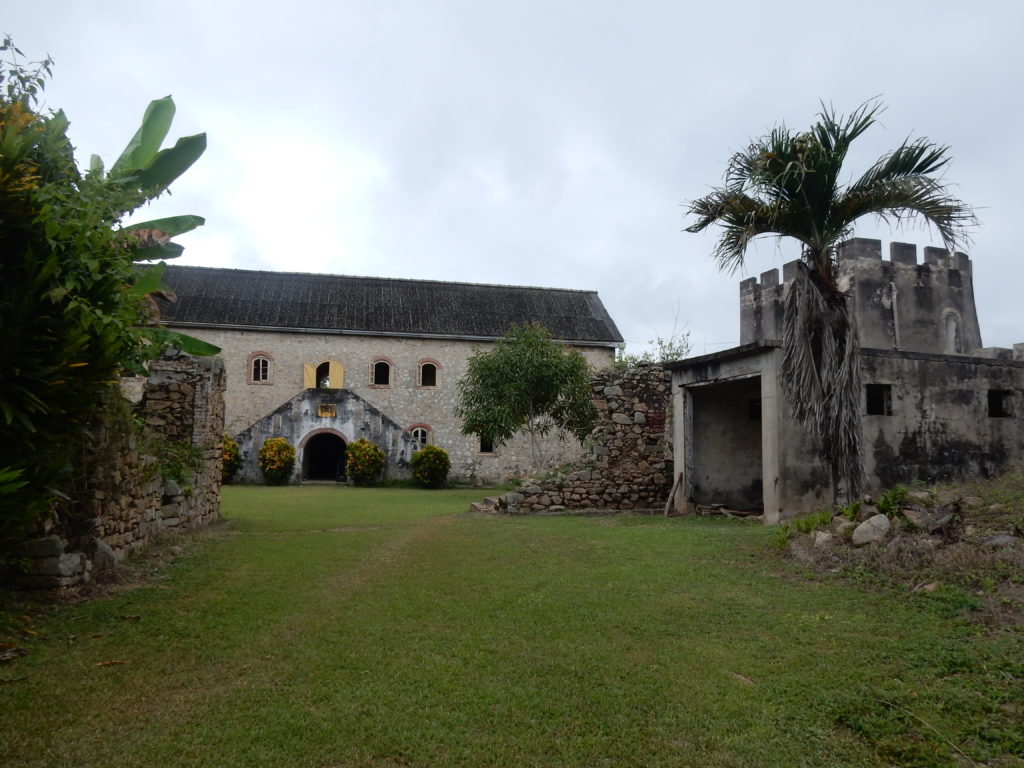Rotary of the Oranges, Brandenburg-Prussia and the enslavement of Africans
The rotary of the Oranges is one the largest squares in the gardens of the Sanssouci Palace at Potsdam. The busts represent several Dutch princes and princesses from the House of Orange. Over the years, Dutch and Prussian aristocrats arranged several marriages to cement relations of kinship between them. The large size of this rotary can be interpreted as a sign of respect to those esteemed friends and relatives of Prussia. In the 18th century, Prussia admired the Netherlands for their architecture, their empire and their global trade relations.
Another proof of this friendship is the Dutch quarter in Potsdam. You can learn more about it in other contributions on our website. Taking the rotary of the Oranges as our point of departure, we want to focus on the friendship between the Great Elector Friedrich Wilhelm of Brandenburg and the Dutch. This relationship explains the colonial aspirations of Friedrich Wilhelm who ultimately participated in the transatlantic slave trade and erected a colony on the African coast.

Friedrich Wilhelm studied in the Netherlands at the Universities of Leiden and The Hague. There, he learnt about the Dutch navy. In 1640, Friedrich Wilhelm returned to Brandenburg and became the Great Elector. He cultivated his friendship with the Dutch, inviting Dutch engineers to work for him. He also married Luise Henriette from the House of Orange. Besides, he was eager to develop trading posts and enrich his kingdom over the plight of enslaved Africans, just like the Dutch East India Company had done since the late 16th century. Friedrich Wilhelm commissioned the Dutch seaman Benjamin Raule to acquire a battle fleet. With ships purchased from Denmark, the fleet sailed to the African continent with the objective to find or build a profitable trading post for Brandenburg-Prussia. In the typical fashion of European aristocracy, Friedrich Wilhelm asked the Dutch seaman to bring back monkeys and parrots to add some exotic touch to his court. On top of that, he explicitly commissioned him to get hold of six young Africans who would serve at his court, as if they were goods rather than humans.
Friedrich Wilhelm was satisfied with the first expedition which brought him what he had asked for. As a result, he gathered investors and founded the Brandenburg Africa Company, an early example of a stock corporation. The rich investors were promised a share of the profit of this trading company. In 1682, another expedition aimed to establish a colonial territory for Brandenburg-Prussia on the so-called Gold Coast, in today’s Ghana. There, the company built a fortress and named it Großfriedrichsburg, after the Great-Elector. This fortress can still be visited today near the town of Pokesu, just like dozens of other forts built by Europeans on this coast.
Friedrich Wilhelm hoped for massive profit through trade between Africa and Europe. But in the early days, the Brandenburg Africa Company lacked sufficient funds. To remedy the financial problems, the Great Elector decided to enter the Transatlantic Trade of enslaved Africans. The growing demand for sugar in Europe was an opportunity for the company. On the islands of the Caribbean, Africans were sold and exploited as enslaved labourers to produce sugar for the European market.
The fortress Großfriedrichsburg served as a secure shipping port for this inhuman trade. Besides, the Brandenburg Africa Company rented the Caribbean island of St Thomas from Denmark. They used it as a foothold to sell the Africans who had survived the long and painful crossing of the Atlantic ocean. The trade of enslaved Africans became the main source of profit for the company. Historians estimate that the fleet shipped up to 20,000 Africans between 1680 and 1717. One out of ten would not survive the journey.

Friedrich Wilhelm died in 1688. Although his son was less interested in the colonial trade, he let the company continue its activity for a while. His grandson, Friedrich Wilhelm I., finally sold the colonial territory to the Dutch West India Company in 1717 in exchange for about 7000 ducats and 12 Africans.
In German memory culture, this early colonial period is often ignored. The importance of Brandenburg-Prussia seems irrelevant when compared to the scale of Dutch, British, Portuguese, Spanish and French empires and their history of conquest, enslavement and exploitation. Still, we think that the history of the Brandenburg Africa Company deserves attention. It is a milestone in the history of African presence in Germany. It reveals that Prussian leaders themselves wanted Africans serving them in Brandenburg. In addition, the global scale of enslavement and trade reminds that no nation in Western Europe should minimize their responsibility in this history of racist violence and its legacies.
